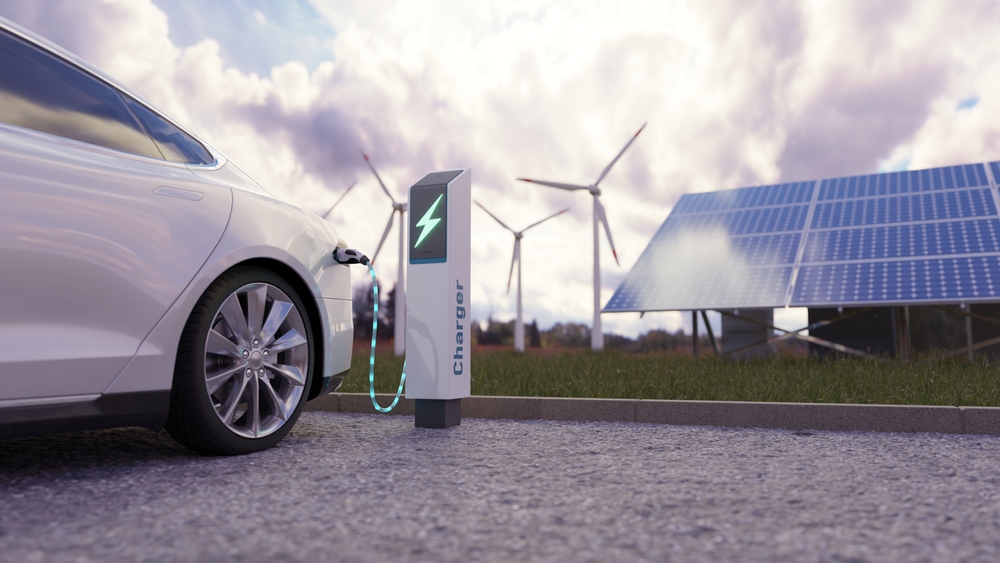
Electric vehicles (EVs) are becoming increasingly popular as consumers look for environmentally friendly alternatives to traditional gasoline-powered cars. A critical component of any EV is its battery, and ensuring its longevity is vital to maximize the vehicle’s efficiency and value. This comprehensive guide explores practical tips to extend the lifespan of your EV’s battery through proper maintenance, optimal charging practices, and avoiding common pitfalls.
Understanding EV Batteries
Before delving into maintenance and charging tips, it’s essential to understand the basic functioning and structure of EV batteries. Most electric vehicles use lithium-ion batteries, similar to those in smartphones and laptops but much larger. These batteries are chosen for their high energy density, longevity, and ability to handle numerous charge and discharge cycles. However, like all batteries, they degrade over time, losing capacity and efficiency. Proper care can significantly slow this degradation.
Practical Maintenance Tips
- Regular Inspections Regular inspections of your EV battery and its components are crucial. This includes checking for physical damage, corrosion on connectors, and ensuring that the cooling system is functioning correctly. Many modern EVs come with built-in diagnostics that can alert you to potential issues.
- Battery Management System (BMS) Utilize your EV’s Battery Management System to monitor the health of your battery. The BMS tracks various parameters, including temperature, charge levels, and cell voltage. Keeping an eye on these metrics can help you identify issues early and take corrective action.
- Temperature Management EV batteries are sensitive to extreme temperatures. High temperatures can accelerate degradation, while very low temperatures can reduce efficiency temporarily. To mitigate these effects, park your EV in a garage or shaded area during hot weather and use preconditioning features to warm up the battery in cold climates.
- Cleanliness Keeping the battery and surrounding area clean can prevent issues such as dust or debris causing overheating or moisture leading to corrosion. Regularly check and clean the battery compartment as recommended by your vehicle’s manufacturer.
- Software Updates Manufacturers often release software updates that can improve battery management and overall efficiency. Keeping your EV’s software up to date ensures you benefit from the latest advancements and fixes.
Optimal Charging Practices
- Avoid Frequent Fast Charging While fast chargers are convenient, frequent use can generate heat and accelerate battery wear. It’s best to use them sparingly and rely more on Level 2 chargers for daily needs. Save fast charging for long trips or emergencies.
- Charge to Optimal Levels Charging your battery to 100% can put stress on it, especially if you don’t drive the car immediately after. Similarly, letting the battery drain to 0% should be avoided. Instead, aim to keep the charge level between 20% and 80% for daily use. Many EVs allow you to set charging limits, which can help maintain this optimal range.
- Use a Timer Many EVs and home charging stations have timers that allow you to schedule charging sessions. Charging your EV during cooler parts of the day or night can help manage temperature and reduce electricity costs if you have time-of-use rates.
- Balanced Charging Routine Avoid habitual short charging sessions, as they can cause an imbalance in the battery cells over time. Instead, aim for fewer, longer charging sessions to ensure all cells are balanced and fully charged.
Avoiding Common Pitfalls
- Neglecting Battery Cooling Overheating is one of the primary causes of battery degradation. Ensure your EV’s cooling system is functioning correctly, and don’t ignore any warning signs related to overheating.
- Using Non-Standard Chargers Always use the recommended chargers and cables for your EV. Non-standard or third-party chargers can be less reliable and may cause damage to the battery or electrical system.
- Ignoring Maintenance Alerts Modern EVs are equipped with advanced diagnostics that can alert you to potential issues. Pay attention to these alerts and address them promptly to prevent minor issues from becoming significant problems.
- Storage Considerations If you need to store your EV for an extended period, ensure the battery is not left at a very high or very low charge level. Aim for around 50% charge, and check the vehicle’s manual for specific storage recommendations.
Advanced Tips for Extending Battery Life
- Battery Recalibration Occasionally allowing the battery to go through a full charge cycle (from near 0% to 100%) can help recalibrate the battery management system, providing more accurate readings of the state of charge.
- Utilize Regenerative Braking Regenerative braking not only improves efficiency but also reduces the load on the battery by converting kinetic energy back into electrical energy. Use this feature to its full potential to gain small but cumulative benefits for your battery life.
- Minimize High-Speed Driving High-speed driving can deplete the battery faster and generate more heat, leading to accelerated wear. Try to drive at moderate speeds where possible to extend the battery’s life.
- Stay Informed Keep abreast of new technologies and practices related to EV battery maintenance. Manufacturers and EV communities often share valuable insights that can help you optimize your vehicle’s performance and longevity.
The Role of Battery Health Monitoring Tools
Several aftermarket tools and apps are available that provide in-depth monitoring of your EV’s battery health. These tools can offer more detailed insights than the built-in systems, allowing you to track degradation trends, cell balancing, and other critical parameters. Investing in such a tool can be beneficial, especially if you plan to keep your EV for a long time.
Future-Proofing Your EV Battery
- Battery Warranty and Replacement Programs Most EV manufacturers offer warranties on their batteries, typically covering 8 years or 100,000 miles. Understand the terms of your warranty and any available battery replacement programs. Some manufacturers also offer leasing options for batteries, which can reduce the long-term financial risk associated with battery degradation.
- Recycling and Second-Life Applications When your EV battery eventually reaches the end of its automotive life, consider recycling or second-life applications. Many batteries still have significant capacity left for stationary energy storage solutions, which can extend their usefulness and reduce environmental impact.
- Staying Updated with Technology Battery technology is rapidly evolving, with new chemistries and advancements being made regularly. Stay informed about these developments as they might offer retrofit solutions or upgrades that can enhance the performance and lifespan of your current EV battery.
Impact of Driving Habits on Battery Longevity
- Smooth Acceleration and Deceleration Aggressive driving habits, such as rapid acceleration and hard braking, can put extra strain on your EV’s battery. Smooth, gradual acceleration and deceleration reduce the demand on the battery, helping to preserve its lifespan.
- Eco-Mode Utilization Many EVs come equipped with an eco-mode that optimizes power consumption by limiting the vehicle’s performance. Using this mode during regular driving can reduce stress on the battery, contributing to longer battery life.
- Weight Management Carrying excess weight in your vehicle can lead to higher energy consumption and faster battery depletion. Regularly remove unnecessary items from your car to maintain an optimal weight and improve battery efficiency.
- Route Planning Plan your routes to avoid heavy traffic and hilly terrains when possible. Stop-and-go traffic and steep inclines require more energy, which can wear down the battery more quickly. Efficient route planning can help you maintain a steady speed and conserve battery power.
Seasonal Care for Your EV Battery
- Summer Care High temperatures can accelerate battery degradation. During summer, park in shaded areas or use a sunshade to keep the interior cooler. If your EV has a battery cooling system, ensure it’s functioning correctly to prevent overheating.
- Winter Care Cold temperatures can temporarily reduce battery efficiency. Precondition your battery before driving by heating it while still plugged in. This helps maintain optimal performance and extends the range during cold weather.
- Tire Pressure Monitoring Seasonal temperature changes can affect tire pressure, which in turn impacts battery efficiency. Regularly check and maintain proper tire pressure to ensure your EV runs efficiently in all weather conditions.
- Battery Insulation Consider using battery insulation products during extreme cold to help maintain a more stable temperature. These products can reduce the amount of energy needed to keep the battery within its optimal operating range.

Utilizing Renewable Energy for Charging
- Home Solar Panels Installing solar panels at home can provide a renewable source of energy for charging your EV. This not only reduces your carbon footprint but also lowers your electricity costs over time.
- Public Charging Stations Look for public charging stations that offer renewable energy options. Some charging networks use solar or wind power to supply electricity, contributing to a more sustainable energy cycle.
- Time-of-Use Rates Take advantage of time-of-use electricity rates, which often offer lower prices during off-peak hours. Charging your EV during these times can reduce your overall energy costs and decrease the demand on the power grid.
- Green Energy Plans Some utility companies offer green energy plans that allow you to source your electricity from renewable sources. Signing up for such a plan ensures that the energy used to charge your EV comes from sustainable resources.
Benefits of Regular Software and Firmware Updates
- Enhanced Battery Management Regular updates often include improvements to the battery management system (BMS), which can optimize charging patterns, improve efficiency, and enhance the overall longevity of your battery.
- Improved Performance Software and firmware updates can introduce new features and enhancements that improve your EV’s performance and user experience. Staying current with updates ensures your vehicle operates at its best.
- Security Enhancements Updates frequently address security vulnerabilities, protecting your EV from potential cyber threats. Keeping your software up to date is crucial for maintaining the security and integrity of your vehicle’s systems.
- Bug Fixes and Stability Improvements Like any complex system, EVs can experience software bugs and stability issues. Regular updates help resolve these problems, ensuring a smoother and more reliable driving experience.
Final Thoughts on Extending Your EV Battery’s Lifespan
Maximizing your EV’s battery life involves a combination of regular maintenance, optimal charging practices, and avoiding common pitfalls. By understanding the fundamentals of how your battery works and implementing these practical tips, you can significantly extend its lifespan, ensuring your electric vehicle remains efficient and reliable for many years. Staying informed about new technologies and best practices will further help you get the most out of your investment, contributing to a sustainable and enjoyable driving experience.



